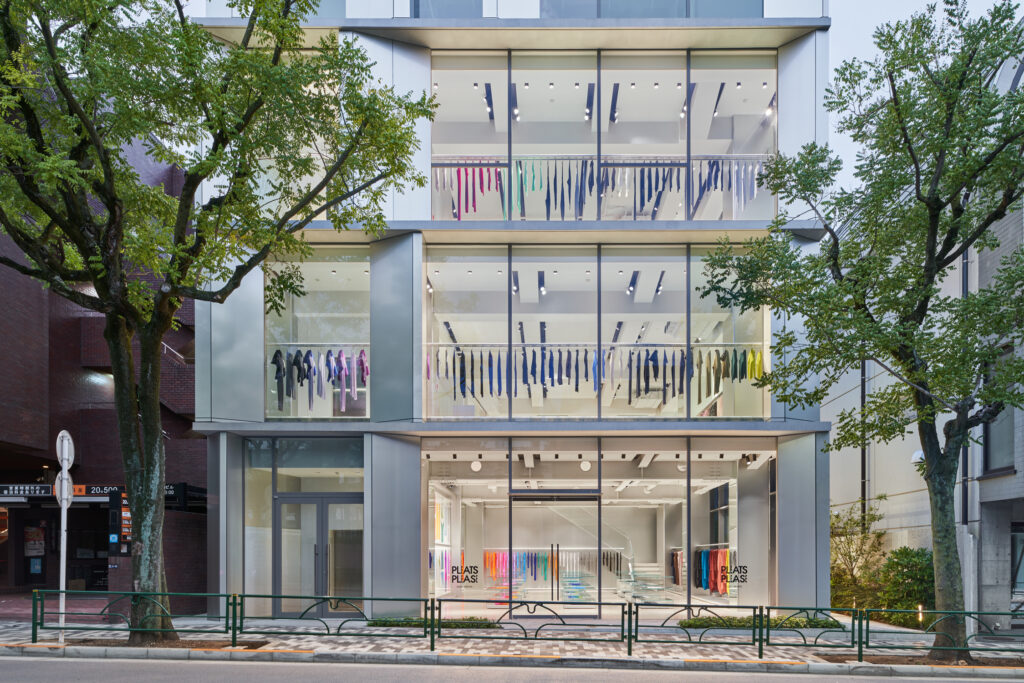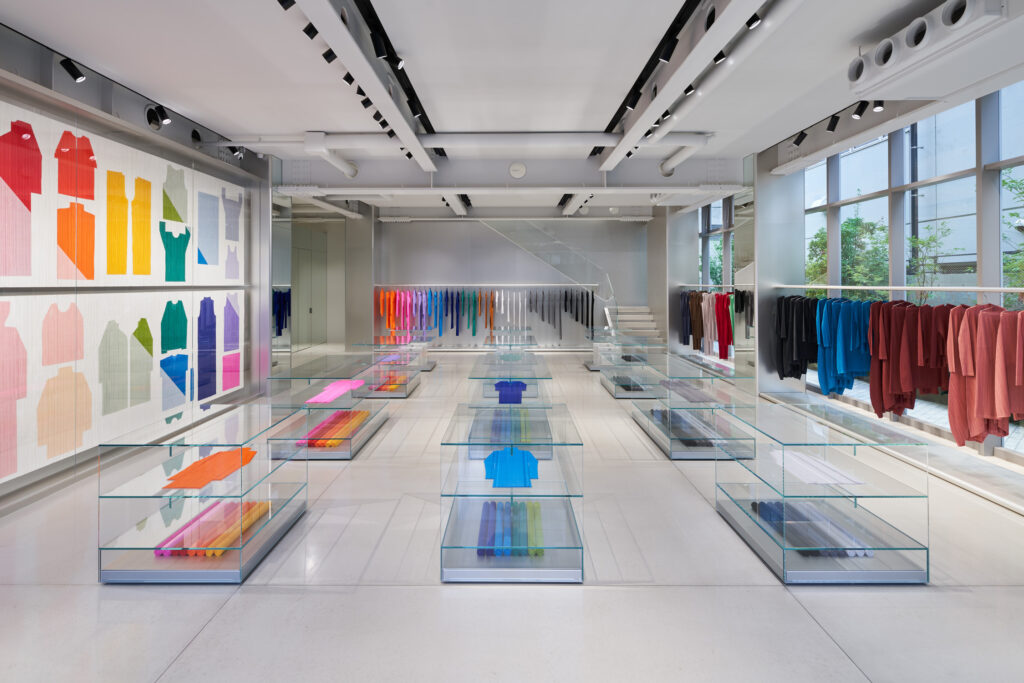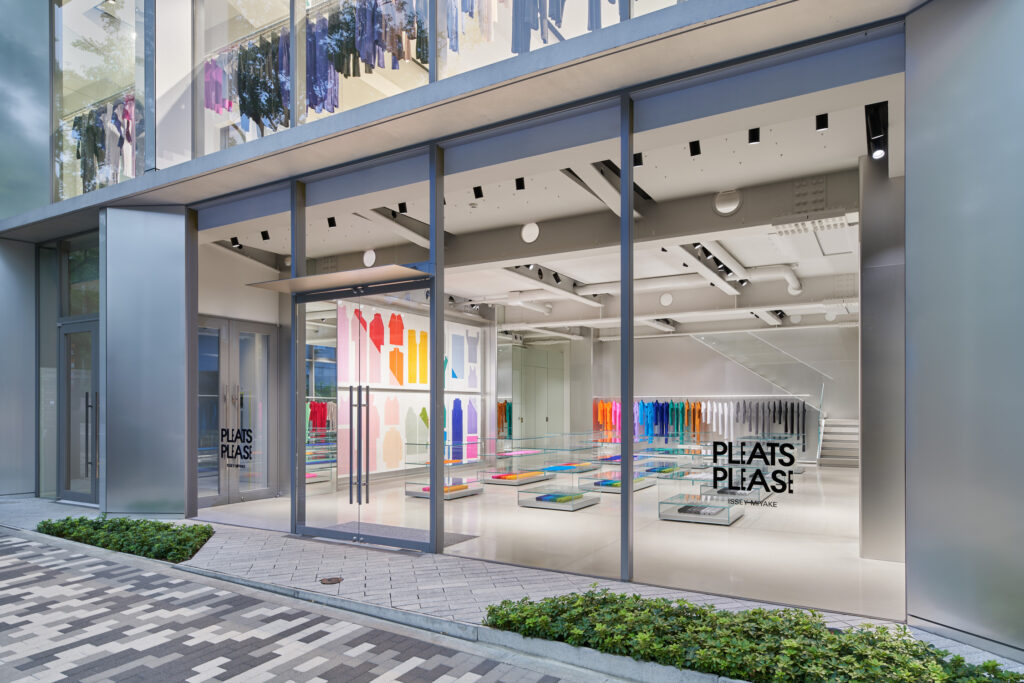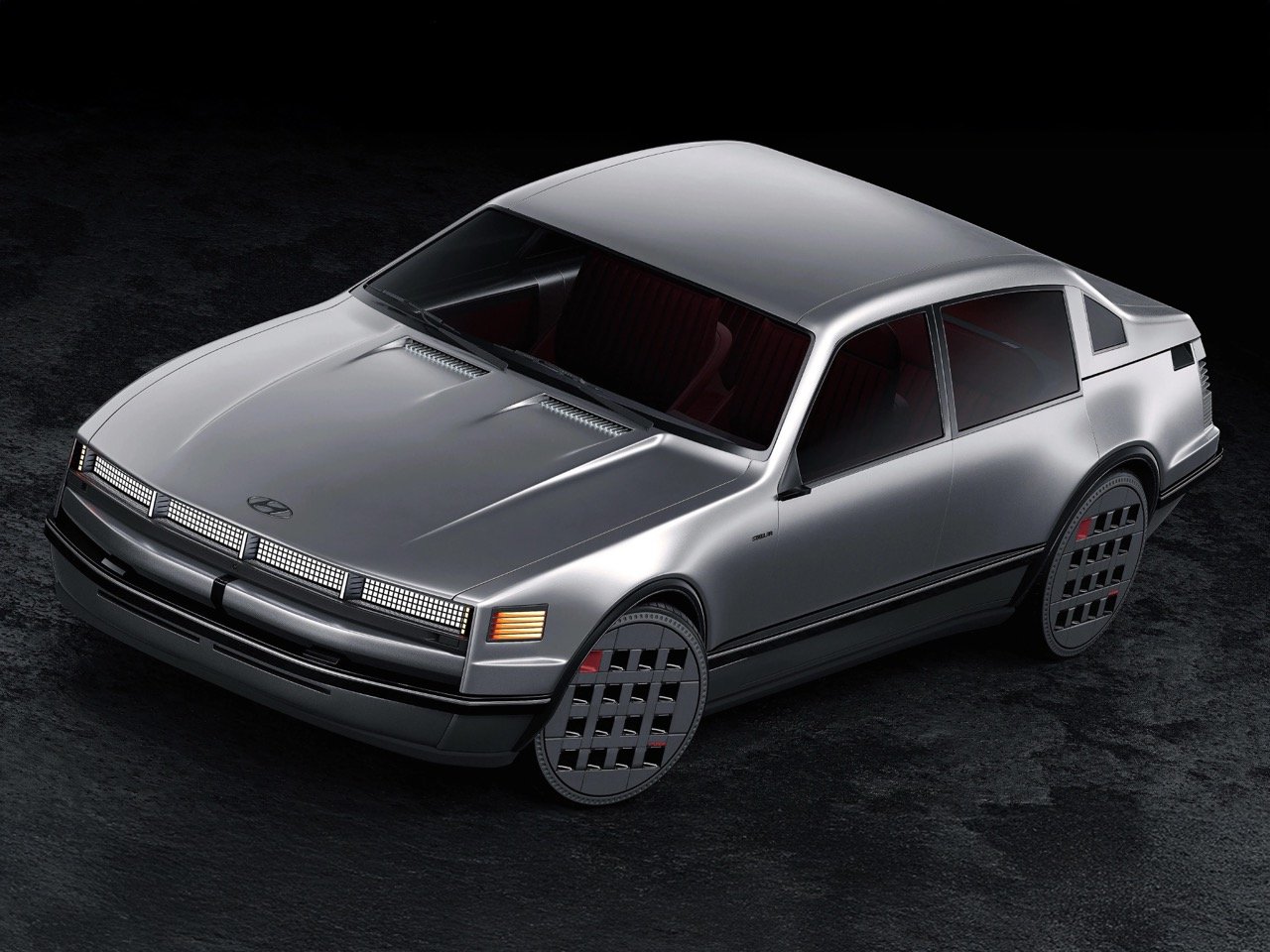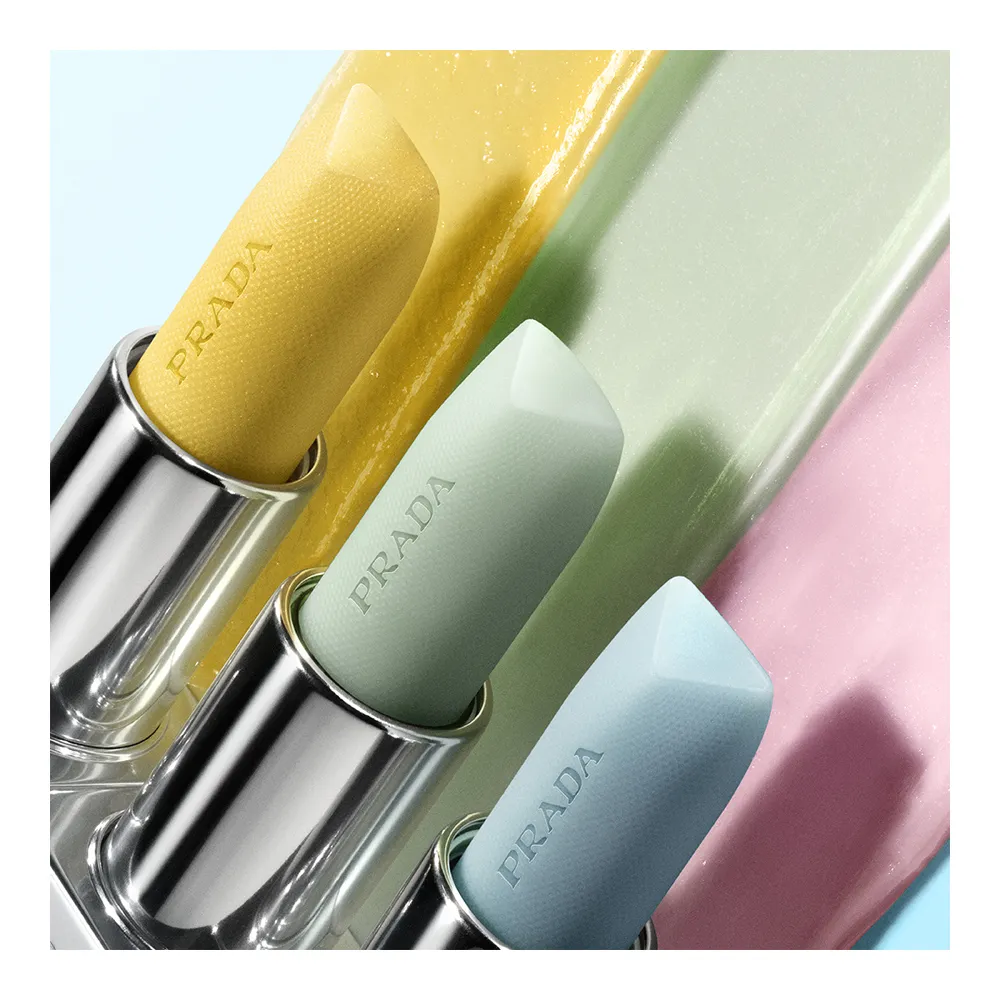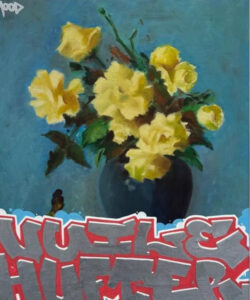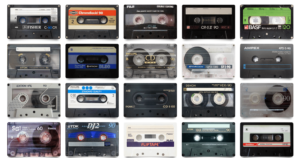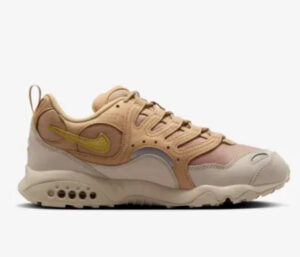a luminous reinvention in tokyo’s fashion epicentre
When Issey Miyake launched PLEATS PLEASE in 1993, it was never simply a diffusion line — it was a democratic manifesto in cloth. Three decades later, the collection’s latest home in Aoyama serves as both temple and laboratory: a crystalline flagship space that embodies the future of design while staying true to the rhythmic, living texture of Miyake’s pleats.
Located on Miyuki Street, across from the original store, the new PLEATS PLEASE ISSEY MIYAKE / AOYAMAopens this Friday, October 17, welcoming Tokyo’s fashion world to a renewed sensory encounter with light, texture, and movement. The building’s geometry — conceived by Tokujin Yoshioka, a long-time collaborator and visionary designer — transforms the retail experience into a poetic dialogue between architecture and garment.
pleats as philosophy
Since its inception, PLEATS PLEASE has revolved around the idea of transformation — a philosophy born from the late Issey Miyake’s pursuit of “clothes that move beautifully with the body.” By heat-setting micro-pleats into fabric after cutting and sewing, the line revolutionised the relationship between form, comfort, and motion. What began as an exploration in practical beauty became an emblem of Japanese innovation — clothing that travels lightly, resists wrinkles, and ages gracefully.
In the new flagship, this very philosophy is translated into spatial form. The pleats themselves are not confined to the racks; they radiate across walls, glass, and light. On the first floor, rainbow-hued sheets of pleated garments are displayed between translucent panels, mimicking the process of pleating itself — an homage to the tactile craftsmanship that underpins the brand.
The installation conveys motion without movement — a static space that breathes, fluttering gently with every change in daylight. It is both art and infrastructure: a living tribute to the quiet radicalism of Miyake’s design ethos.
tokyo’s architecture of light
Tokujin Yoshioka, whose collaborations with Issey Miyake stretch back to the early 2000s, has once again distilled his architectural language into the brand’s DNA. Yoshioka, often described as a “designer of light,” brings his characteristic minimalism to the fore: glass and aluminium merge to create a luminous shell that dissolves boundaries between interior and exterior.
In contrast to traditional retail design that isolates products, Yoshioka’s concept invites the city in. The reflective surfaces mirror Aoyama’s skyline by day and radiate soft luminescence by night. Within this envelope, clothing hovers in a near-weightless state — suspended on custom-engineered racks that give the illusion of levitation.
This illusion of “floating fabric” echoes the collection’s central metaphor: lightness as liberation. In Yoshioka’s words from a previous collaboration, “To see the unseen is to design the invisible.” The Aoyama flagship embodies that sentiment — not a store, but a sensory theatre of transparency and reflection.
the first floor: spectrum and texture
Visitors entering from Miyuki Street are immediately immersed in a kaleidoscope of pleats. The ground floor serves as a vibrant prelude to the brand’s world, where textiles become an architectural material. Sheets of pleating paper, dyed in spectral gradients, frame garments that seem to oscillate between states — folded and unfolded, rigid and fluid.
The arrangement is deliberate: the garments are displayed in chromatic order, producing a visual gradient from soft lavender and pearl to vivid coral and lime. Each pleated form becomes a brushstroke in a living canvas of motion. Beneath the visual splendour lies the process — rolls of pleated fabric encased in glass, allowing visitors to witness the craft itself.
For PLEATS PLEASE, transparency is storytelling. The visible structure of display mirrors the honesty of design — nothing hidden, everything revealed, just as Miyake once insisted that “the process is as beautiful as the result.”
the upper floors: rhythm
Ascending the softly illuminated staircase — itself framed in brushed aluminium — visitors reach the second and third floors, where the interplay of space and material becomes more meditative. The second floor hosts the main retail area, with collections arranged by thematic palettes rather than seasons, a nod to the brand’s timeless design language.
Mannequins are intentionally sparse. Instead, garments hang freely, their pleats catching the ambient light like kinetic sculptures. The absence of visual clutter enhances the rhythm of vertical lines, making each piece appear almost architectural.
The third floor, meanwhile, is conceived as a “breathing space” — part gallery, part archive. Here, Yoshioka integrates subtle lighting that responds to the time of day, modulating intensity to simulate natural light conditions. Historical pieces from early PLEATS PLEASE collections share space with recent innovations, reminding visitors of the brand’s three-decade evolution.
In this quiet sanctum, the ethos of Issey Miyake resonates: a commitment to future-thinking design rooted in tactile human experience.
tokyo’s continuum of design
Aoyama has long stood as Tokyo’s design crucible — home to Comme des Garçons, Yohji Yamamoto, and Miyake’s own creative studios. The district’s modernist streetscape embodies the synthesis of art, fashion, and architecture that defines contemporary Japanese aesthetics. The new PLEATS PLEASE flagship adds a fresh chapter to this urban narrative.
Positioned adjacent to the FROM-1st Building — an address steeped in Miyake’s history — the flagship stands as both continuation and rebirth. Across the street, the original PLEATS PLEASE store remains as a touchstone of legacy, while the new space points toward the brand’s global horizon. Together, they form a dialogue across time and space — an interplay of past innovation and present renewal.
The reopening also signals a new phase in ISSEY MIYAKE Inc.’s retail strategy. Following recent redesigns of the Homme Plissé and BAO BAO stores, the company has moved towards creating distinct architectural identities for each line, unified by a spirit of experimentation. Aoyama now becomes the epicentre of this evolving constellation.
miyake and yoshioka’s shared vision
The partnership between Issey Miyake and Tokujin Yoshioka transcends designer-architect collaboration — it is a dialogue between two philosophies of perception. Yoshioka, known for his “Tokujin Crystal” installations and works for brands like Cartier and Louis Vuitton, shares Miyake’s belief in design as a human experience of light and motion.
Their shared projects — from exhibition spaces to product design — have consistently blurred boundaries between art, science, and craft. The Aoyama flagship continues that lineage, expressing what both have long sought: an architecture that feels alive.
Yoshioka’s previous remark, “I design light as if it were a material,” finds its physical manifestation here. The store’s surfaces capture light not as reflection but as presence — shimmering, refracting, alive. The aluminium panels bend light into pleated rhythms; the glass enclosures ripple like fabric. The result is an architectural pleat — a folding of air, glass, and time.
View this post on Instagram
culture
PLEATS PLEASE has always symbolised more than fashion — it stands as a cultural bridge between Japan’s craft traditions and its avant-garde innovation. The pleating process itself draws parallels to origami and washi-paper techniques, but the philosophy extends to the heart of Japanese aesthetics: shibui (understated beauty) and ma (the space between things).
In this flagship, those values come alive. The deliberate spacing of displays creates negative space that heightens perception; garments do not compete but converse. The shimmering aluminium evokes both futurism and simplicity, while the pleated forms animate the emptiness — an orchestration of air and rhythm.
Visitors are not mere shoppers but participants in an aesthetic ritual. Each floor becomes a meditation on perception: how light folds, how colour breathes, how fabric moves.
sustainability
In a world obsessed with novelty, PLEATS PLEASE’s enduring appeal lies in its resistance to obsolescence. Each piece, thanks to its heat-set pleating, retains shape and vibrancy for years. This durability aligns with the brand’s long-standing environmental ethos — designing not for disposal but for longevity.
The new Aoyama flagship subtly reinforces this principle. Materials such as recyclable aluminium and tempered glasswere chosen for their permanence and low environmental impact. The lighting system, powered by energy-efficient LEDs with motion sensors, reduces energy waste. Even the pleating paper used in installations is sustainably sourced and recyclable.
This blend of aesthetic sustainability and environmental mindfulness continues Miyake’s belief that innovation and responsibility are inseparable. The store thus becomes both a gallery and a statement: beauty can coexist with ecological consciousness.
beyond the garment
As retail evolves into experiential culture, PLEATS PLEASE Aoyama positions itself not as a transactional space but as a multisensory environment. Sound design, crafted in collaboration with Japanese composer Ryuichi Sakamoto’s studio prior to his passing, imbues the interior with an ambient pulse — soft tonal echoes that mirror the rhythm of pleats swaying in motion.
Touch, too, plays a role. Visitors are encouraged to feel sample textiles, to understand the resilience and softness of the pleats. Light reacts subtly to presence, refracting slightly as one walks through — a quiet choreography between human and material.
In doing so, the store invites reflection on the nature of fashion itself — not as object, but as experience.
the symbolism of reopening
That the store opens in October 2025, three years after Issey Miyake’s passing, adds emotional resonance. It is the first major retail unveiling since the designer’s death, and the Aoyama flagship stands as a living memorial to his philosophy of “design as hope.”
In an era defined by volatility, the PLEATS PLEASE store represents continuity — a reminder that innovation is not bound by trend but by imagination. The translucent façade becomes a metaphor for Miyake’s lifelong mission: to illuminate the ordinary through creativity.
The store’s opening weekend will include limited-edition releases and an archival exhibition tracing the evolution of PLEATS PLEASE since 1993, featuring early campaign imagery by Irving Penn and collections that redefined the notion of wearable art.
Visitors will find not only garments but also echoes of Miyake’s humanism — a belief that design, at its best, uplifts the spirit.
the art of enduring lightness
The new PLEATS PLEASE ISSEY MIYAKE / AOYAMA flagship encapsulates everything the brand has stood for across three decades — innovation, inclusivity, and the poetry of movement. Through Tokujin Yoshioka’s crystalline architecture, it achieves what few retail spaces dare: to transform commercial presentation into emotional architecture.
From pleating paper walls to suspended garments and luminous air, every element reflects a shared pursuit — the creation of beauty through simplicity. The flagship’s design transcends the notion of display; it becomes choreography, breathing with every flicker of Tokyo light.
More than a store, it is an experience — a living pleat of time that folds the brand’s past into its radiant present, keeping Issey Miyake’s philosophy alive in every shimmer of glass and whisper of fabric.
No comments yet.

